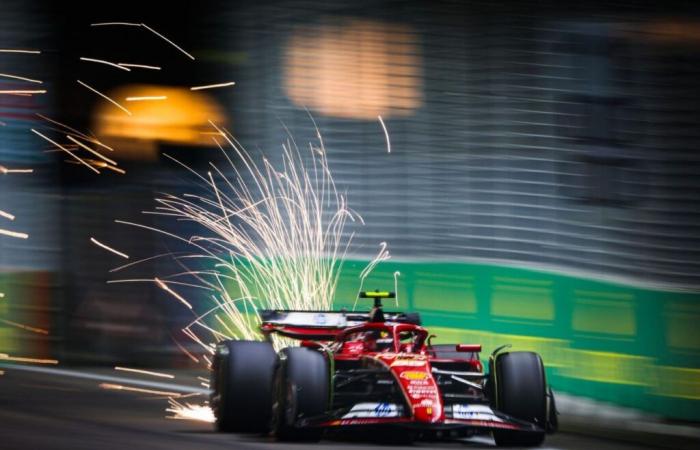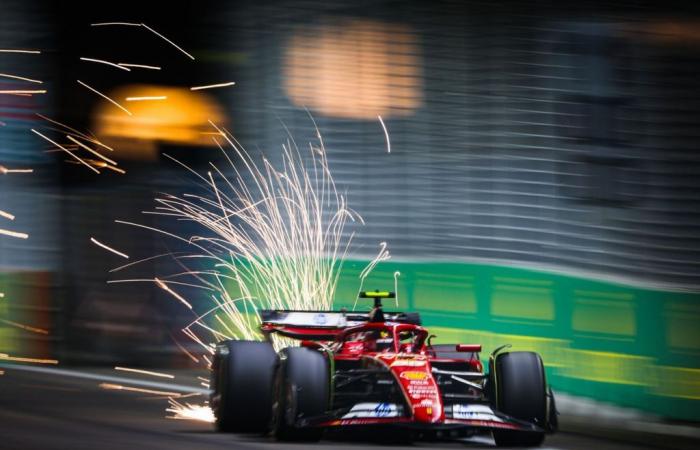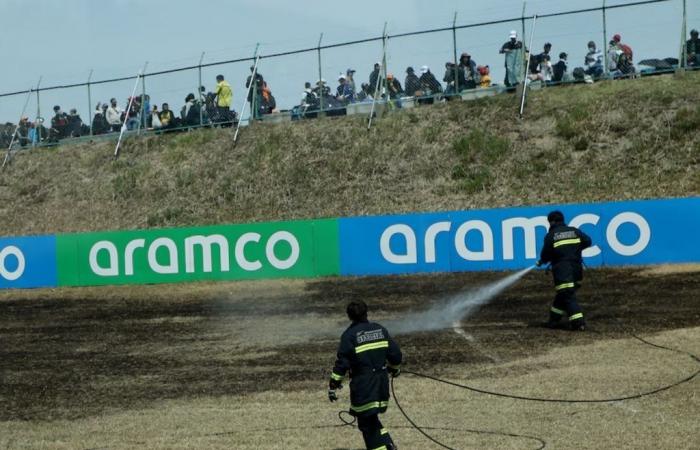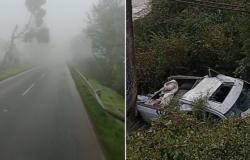One of the most shocking shows of the modern formula 1 (especially in night careers) is See the cars furrowing the lines at full speed while a rain of sparks springs from its lower part.
However, behind this characteristic postcard there is a growing concern: those flashes are causing fires at the edges of the circuits.
The sparks originate when cars “touch background”, that is, when the flat background of the vehicle brushes the asphalt due to the low driving height and the intense aerodynamic load. To protect the floor of the cars, the FIA imposes the use of a composite wooden plate, known as “Plank”, manufactured with Jabroc, a resistant material of beech and resin wood. On this plate, titanium sliding blocks are mounted that, when scraping the ground, generate the colorful sparks.
While these elements fulfill a protection function, avoiding structural damage to the vehicle and ensuring that regulatory heights are respected, Its use has revealed an unwanted side effect: the risk of fires in areas of dry vegetation.
From the show to the problem: fires in the big prizes
Although the sparks are part of the visual DNA of Formula 1, The concern grew since last year, when unexpected fires occurred at the edges of the track during the Chinese Grand Prix. Initially, it was speculated with natural causes, such as underground gases, but the repetition of the phenomenon in different events ended up confirming the origin: The sparks of the cars.
The situation worsened in the recent Japan Grand Prixwhere during the free training several spotlights lit the alarms. Despite immediate measures (such as cutting the grass, remove waste and water the critical areas), The flames persisted and forced to stop the sessions on several occasionsincluding the dramatic accident of the pilot Jack Doohan.

The impact of fires in Japan was limited thanks to a strong storm that fell on the night prior to Sunday’s race, which allowed the Grand Prix to develop without interruptions. However, those responsible for the FIA recognize that, If this rain has not occurred, the fires could have directly affected the result of the competitiongenerating a much greater debate and harming the show for fans.
Solutions under study: less sparks, more security
The severity of the problem led to Formula 1 commission would discuss urgent alternatives on April 24.
Among the most concrete measures is the proposal of replace the titanium of sliding blocks with a steel alloy. This modification would reduce both the quantity and the temperature of the sparks, minimizing the risk of fire.
However, this change is not less: titanium, due to its lightness and resistance, not only provides spectacularity but also aerodynamic efficiency. Its substitution could minimally modify the behavior of the cars and subtract some of the visual show that fans value so much.
In addition, the FIA evaluates to implement special treatments on the margins of the slopes, to prevent vegetation from burning easily. The objective is to find a balance between the security of the events and the preservation of the experience that converts Formula 1 into a unique show.
A future without a rain of sparks?
While solutions are analyzed, Circuit organizers must take precautions to avoid new episodes. Although for fans the sparks will continue to be an iconic image, the challenge is to maintain magic without jeopardizing the safety of pilots, equipment and public.










